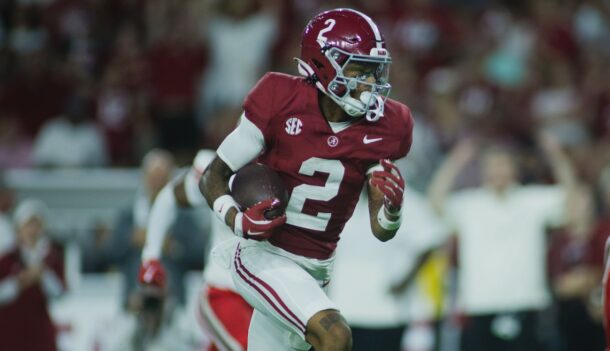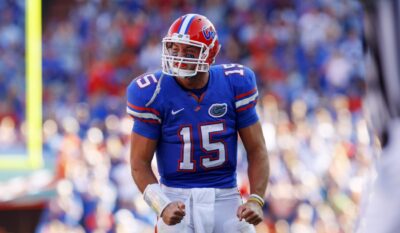
Modern offenses should shift expectations for Alabama’s defense, so here’s what’s realistic in 2020
There are 2 things that can exist at the same time in 2020.
Alabama can have one of the best defenses in America, but it won’t be nearly as effective as the dominant units of the Nick Saban era.
Read that sentence again because I know it might sound like a crazy concept. Alabama’s defense can be dominant relative to its 2020 competition, but not to its program competition. On second thought, that doesn’t sound so crazy. At least it shouldn’t.
After all, Alabama is coming off a season in which it ranked No. 13 in scoring defense, yet it was easily one of the worst showings of the Saban era. Four teams hit 28 points against Alabama. From 2009-12 during the best 4-year stretch under Saban, a total of 4 teams hit 28 points against Alabama. That’s an average of 1 per year. From 2013-19, that number was 2.6. In just the past 2 years, that number is up to 4.
For Alabama fans, that might feel to some like the sky is falling. We’re talking about a program that had a 24-game streak of not allowing anyone to hit the 28-point mark. Not surprisingly, that streak was bookended by Cam Newton’s “Cam back” in 2010, and Johnny Manziel’s Heisman Trophy-clinching game in 2012. Once upon a time, hitting 28 points against Alabama was an accomplishment worthy of enshrinement. Now, true freshmen quarterbacks like John Rhys Plumlee are out here doing it.
Welcome to the new age. Rather, welcome to the new age of expectations.
Alabama fans should still expect the defense to be elite, especially this year. Well, unless the Crimson Tide has another September in which it’s forced to start 4 true freshmen in the front 7. As you recall, that happened last year when LaBryan Ray went down against South Carolina. In the previous 12 years of the Saban era, he had never started more than 1 true freshman in the front 7.
That included replacing preseason All-American middle linebacker Dylan Moses following his season-ending injury. The Crimson Tide lacked a guy who could sniff out run plays like this:
Alabama LB Dylan Moses (#32) is excellent at keeping his shoulders square and remaining patient when attacking downhill vs. the run.
Great example here: pic.twitter.com/1RrqhDq5ih
— Jordan Reid (@JReidNFL) August 8, 2019
Yes, the injuries mattered. Having Moses and Ray back healthy will matter, too. As much as we’ve grown accustomed to Alabama having depth galore, it’s different in the transfer portal era when you lose 5-star guys in the front 7 right before the start of the season like Antonio Alfano and Eyabi Anoma.
Also different is this whole “scoring points” thing in college football. Alabama is proof of that. The Crimson Tide finished No. 2 in FBS in scoring behind LSU’s record-setting offense. That marked the first time in 18 years that any SEC team posted a top-2 scoring offense. It’s no secret that offenses are built differently than they were at the beginning of the decade.
Gone are the days of 2011 when Alabama could allow just 12.6 completions per game. In 2019, teams attempted 6 more passes per game against Alabama than they did in 2011. That’s telling considering how often teams trailed against Alabama during that 2011 season.
From 2009-17, Alabama was at least No. 4 in scoring defense all but once (it ranked No. 6 in 2014). During that stretch, it had 4 defenses finish No. 1 in scoring and only 1 group (2014) allowed at least 16 points per game. Each of the last 2 years, Alabama finished outside the top 10 and allowed an average north of 18 points per game.
This is the part where Alabama fans remind me that Pete Golding is no Jeremy Pruitt or Kirby Smart and that Saban’s faith in him is incredibly frustrating. I’m not here to say you’re wrong to feel that way. I’ll instead say that if he can’t get it done in 2020, well, you won’t have to talk Saban into cutting bait.
At the very least, Alabama should get back to finishing in the top 10. It nearly did that last year when it was No. 13 in scoring. And actually, that’s not accounting for plays like the 2 pick-6s returned against Auburn. Take those plays away and that drops the average down a full point. There’s reason to believe Alabama’s defense could be several points better than it was a year ago.
Returning percentage of production is a phenomenal stat for projections, but the 1 thing it doesn’t totally account for is a team who will return several guys who missed a lot of time the previous season. In other words, no, Alabama’s No. 75 rank in percentage of returning production doesn’t tell the full story.
A healthy Moses is important (what a sentence) and so are the returns of Ray and Josh McMillon, who also suffered a season-ending injury last August.
Getting those veterans back in the front 7 with the return of more battle-tested sophomores D.J. Dale and Shane Lee should help Alabama improve in the area it looked least like its former self. That is, defending the run. Alabama was No. 7 in the SEC and No. 37 nationally in that category.
Let’s put that in perspective. From 2008-17, Alabama’s run defense was worse than No. 7 nationally once (2010) and it never fell outside the top 10. Even that 2018 team that allowed an average of 150 rushing yards in the final 3 games still finished No. 3 in the SEC and No. 19 nationally.
No wonder Alabama fans felt helpless watching that defense far too often. The Ole Miss game alone was enough to think there were different players in the Crimson Tide uniforms.
Golding doesn’t have to reinvent the wheel to get Alabama’s defense moving like it used to. Well, sort of.
Anyone saying Golding has to repeat the 2011 or 2012 units who averaged less than 11 points per game is unrealistic, especially considering Mike Leach and Lane Kiffin just joined the division and LSU discovered what offense was. Nobody in college football accomplished allowed less than 11 points since Alabama pulled it off in 2012. Three things seem like fair expectations for Alabama in 2020:
- Allow no more than 14 points per game
- Allow no more than 100 rushing yards per game
- Allow no more than 2 games of 28 points
Hitting those 3 marks could likely give Alabama a top-5 defense at season’s end. Is that easier said than done? Absolutely. That 2018 team didn’t deal with the injuries in the front 7 that the 2019 team did and it struggled down the stretch against better competition (don’t forget the defensive letdown against Arkansas).
I still come back to the belief that the power shift in the SEC favors these offenses. There are more teams willing to roll out up-tempo, high-octane offenses. Closing your eyes and hoping for a repeat of 2011 is unrealistic in 2020. That’s fine. And it’s fine if Alabama’s defense has to do some more heavy lifting in the post-Tua Tagovailoa era.
Call me crazy, but it just might be ready for that.
Connor O'Gara is the senior national columnist for Saturday Down South. He's a member of the Football Writers Association of America. After spending his entire life living in B1G country, he moved to the South in 2015.







